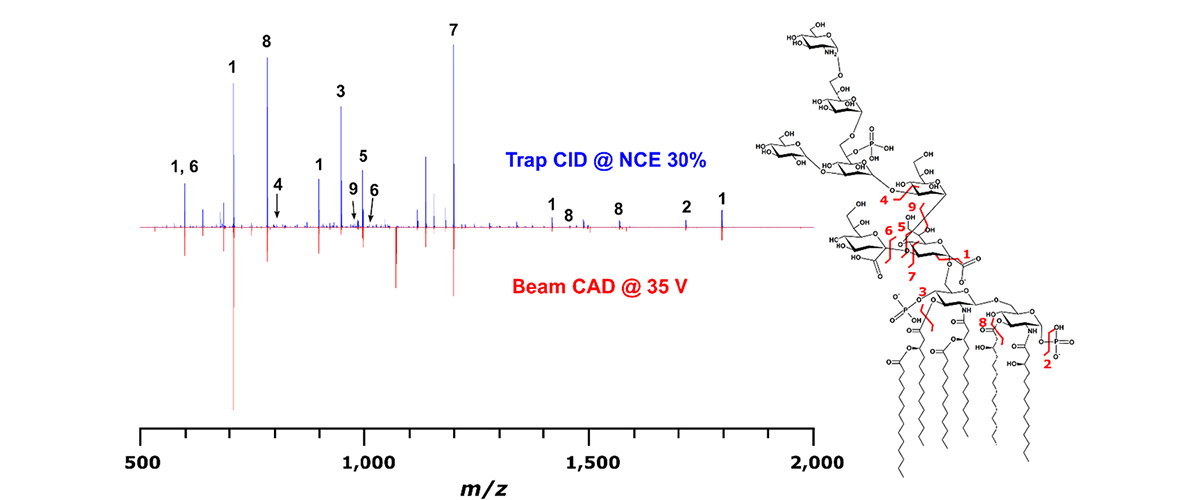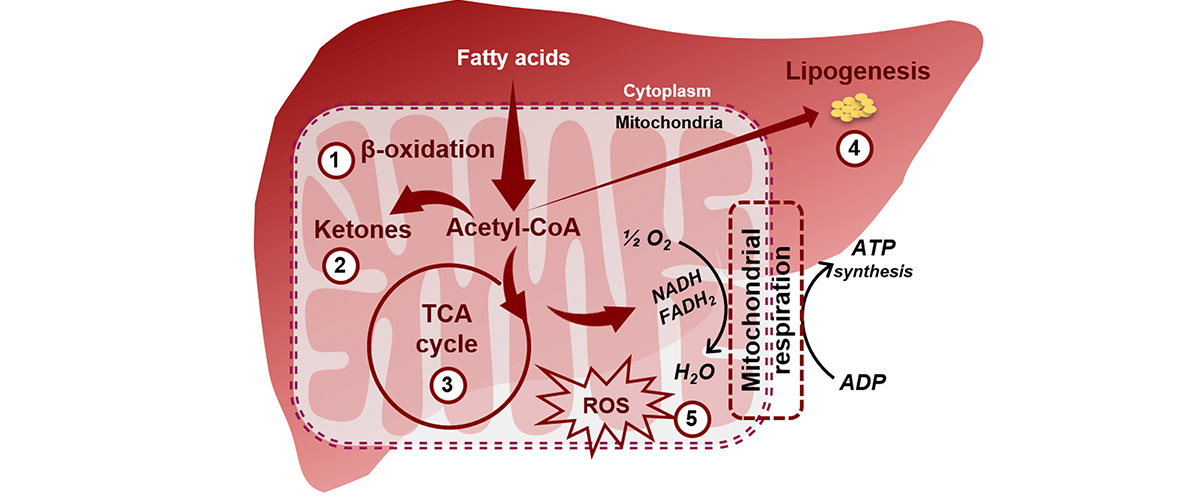First some background
The molecule lipopolysaccharide (LPS) is a major component of the cell membrane of E. coli, salmonella, and similar bacteria. Thanks to recent advances in LPS biology, researchers are studying the molecule in the hopes of developing vaccines and other medicines to combat these bacteria.
What did scientists discover?
Using a technique called top-down tandem mass spectrometry available at the MagLab, scientists deciphered the structure of a large LPS molecule derived from E. coli. This detailed information sheds light on its biological activities and possible use in vaccines.
Why is this important?
Structural determinations of most LPS extracts are not routine, making it hard to predict their biological activities. When they are performed, the traditional methods require first chemically decomposing these large molecules before analyzing them, making their biological activity even less clear. This new work at the MagLab is proof of principle that the entire LPS structure can be determined by mass spectrometry.
Who did the research?
Benjamin L. Oyler1, Mohd M. Khan1, Donald F. Smith2, Erin M. Harberts1, David P. A. Kilgour3, Robert K. Ernst1, Alan S. Cross1, David R. Goodlett1
1University of Maryland, Baltimore; 2National MagLab; 3Nottingham Trent University
Why did they need the MagLab?
The high mass resolving power of the MagLab’s 21-tesla ion cyclotron resonance magnet revealed that the E. coli LPS extract was extremely complex, as shown in the image above. High mass accuracy and tandem mass spectrometry enabled confirmation of the expected structure.
Details for scientists
- View or download the expert-level Science Highlight, Top down tandem mass spectrometric analysis of a chemically modified rough-type lipopolysaccharide vaccine candidate
- Read the full-length publication, Top Down Tandem Mass Spectrometric Analysis of a Chemically Modified Rough-Type Lipopolysaccharide Vaccine Candidate, in J. Am. Soc. Mass Spectrom.
Funding
This research was funded by the following grants: G.S. Boebinger (NSF DMR-1157490, NSF DMR-1644779); D.R. Goodlett and R.K. Ernst (NIH 5R01AI123820)
For more information, contact Christopher Hendrickson.






